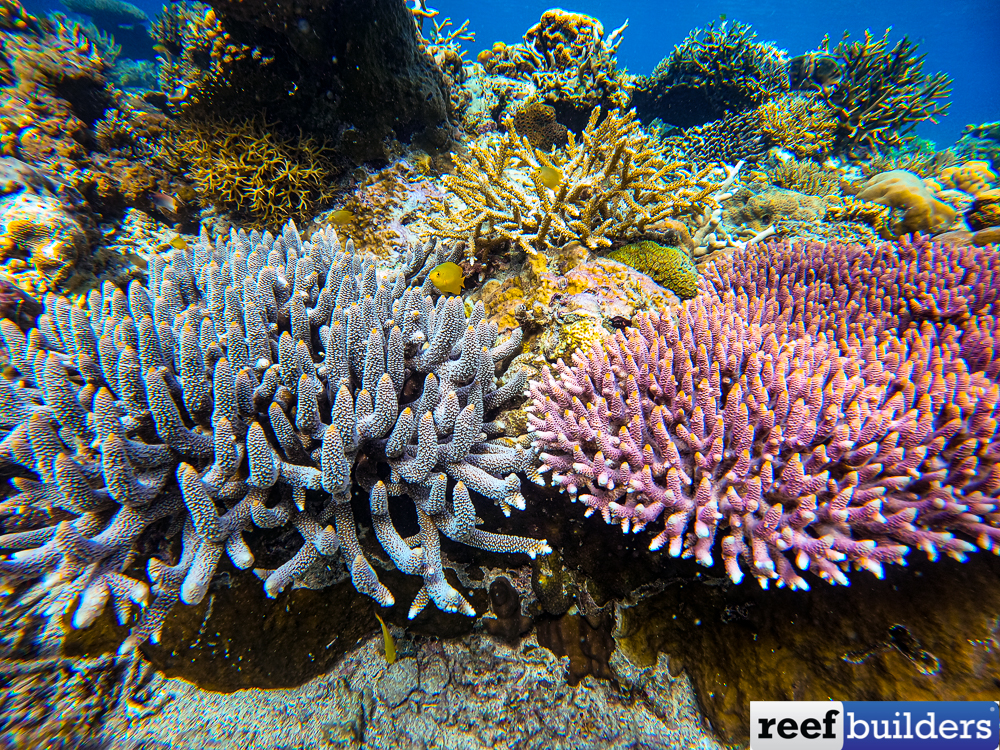These two iconic Acropora are so closely related that for many years A. spathulata were thought to be thick versions of Acropora millepora on the top and exposed reef. Acropora spathulata was even called A. millepora by the most eminent coral taxonomists right up until 1999, and until now, Acropora spathulata has only been recorded in Indonesia, by us, and is still only scientifically recorded from the Great Barrier Reef to Fiji and the Solomon islands. It is actually very rare in Indonesia, since we only found it in one location, and have never seen it anywhere else. Which is very strange!

A very rare sight
We thought that pictures of Acropora spathulata and Acropora millepora together in the wild, were not only very rare, maybe unique, but also very interesting. As these two corals look very similar at a macro level: very similar series of touching and scaled radial corallite, colony shape, axial corallite – kind of the same but different! But it’s only at the wide angle level and when seen together with the same scale that we can grasp the real differences of these two species.
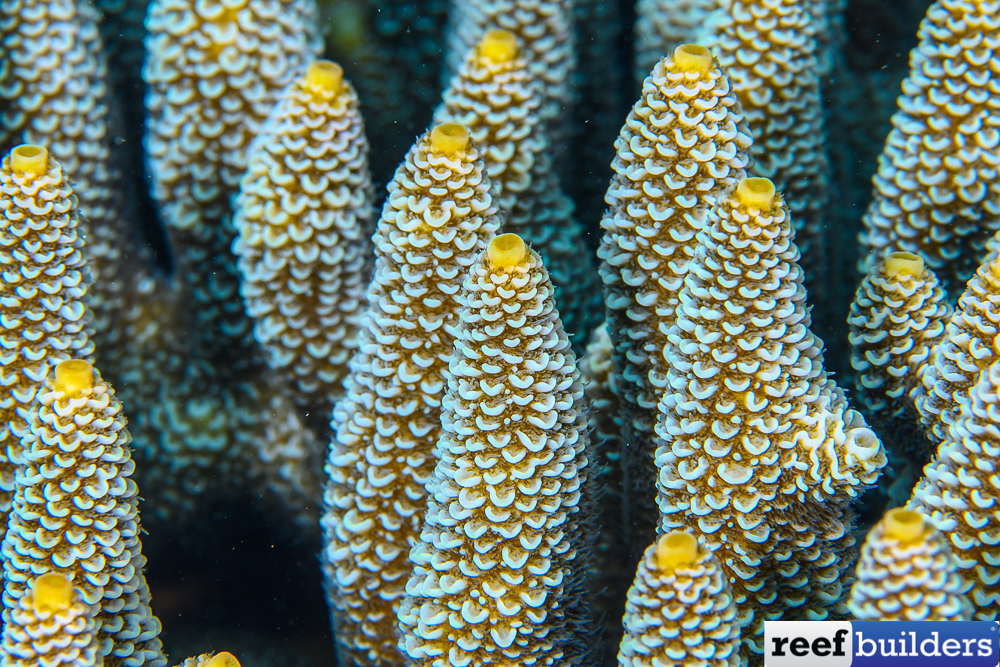
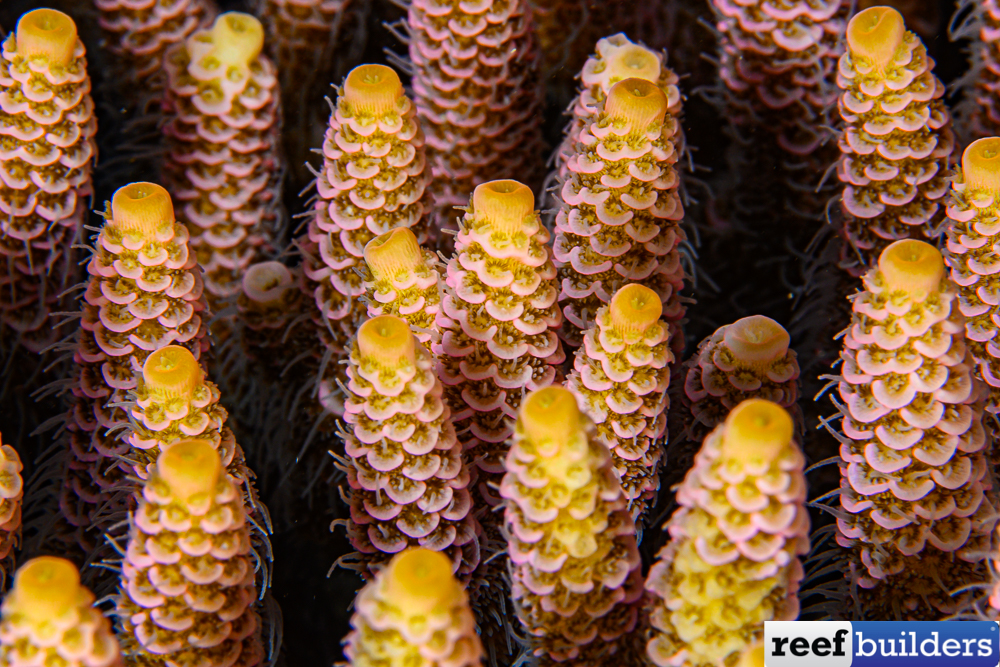
They share almost the same habitat
I don’t think I had ever seen pictures of both species living together before. That’s why we were very excited to still find some, on the exact same reef we visited a decade back, but were also delighted to find them next to each other.
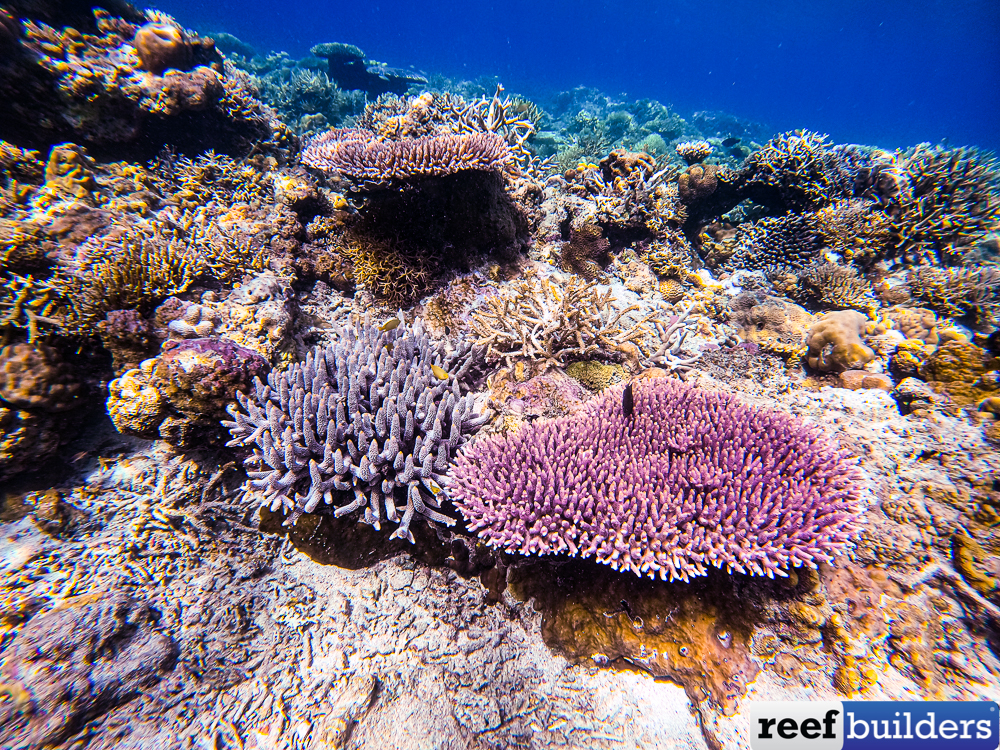
Both species like the top, flat section of the reef. 2 m (6ft) deep, where it’s actually more comfortable to snorkel than scuba dive. Where light is at its highest, and access to the dirty top layer of floating surface phytoplankton is at its best! The most expensive and productive piece of real estate on the reef, right below the low tide border!

Usually A. spathulata prefers a slightly more exposed habitat, where occasional swell will flatten most of the reef’s fragile species, while millepora is more abundant, in quite low swell, and more protected, calm, and turbid areas. Acropora spathulata has grown accordingly with thicker, denser, sturdy branches able to resist and extract food in slightly more turbulent waters.
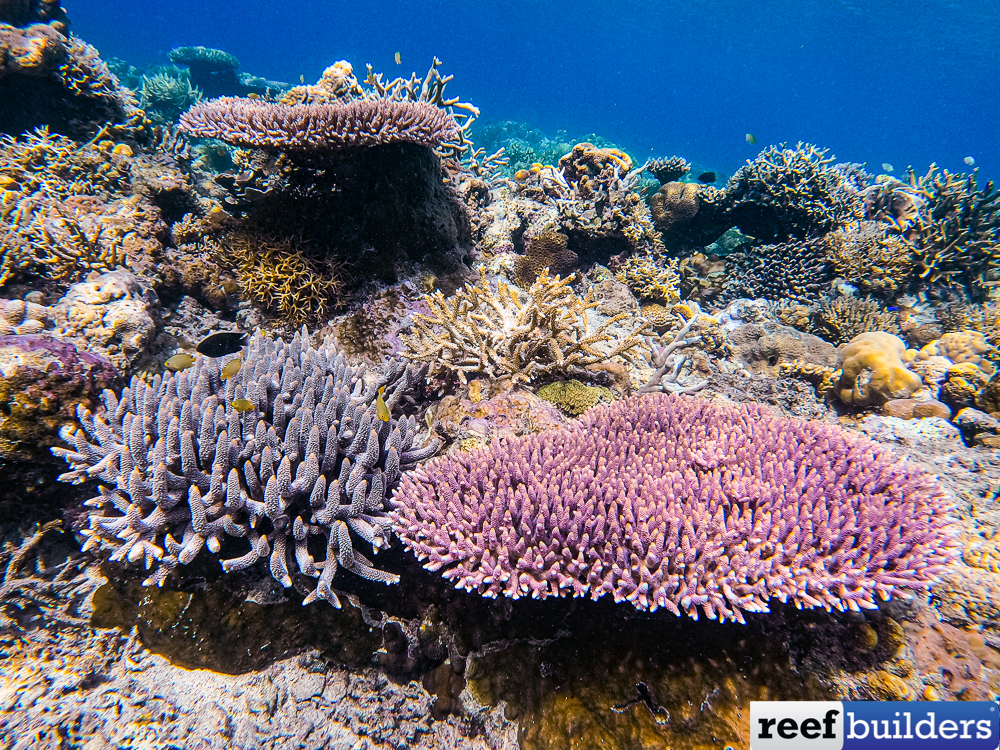
Reef Aquarium care
So how does this translate into aquarium maintenance? Just a small but important detail – you should give more flow to A. spathulata, and it’s basically impossible to give them too much light, so the more light, the better! And finally, if you want them to thrive, grow fast and produce eggs, you should feed them on phytoplankton, which is a topic for another article.
On a different note, we visited this reef back in 2015. It was the most beautiful reef we had ever seen. There were no signs of human development on the surroundings. This year however we saw the now classic signs of reef degradation, overfishing, with broken and damaged colonies, coral disease, Drupella snails, plastic pollution, and we had the feeling that this reef lost 5-10% of its coral cover in seven years. One more reason why these photos are important, as they picture something that could disappear very soon.


